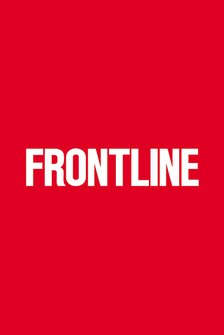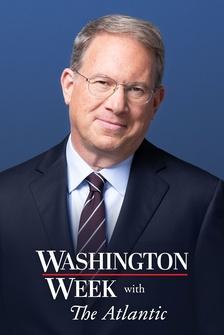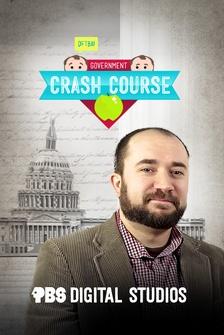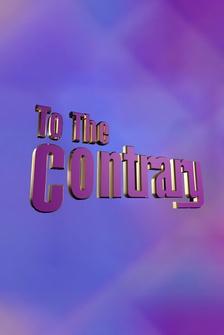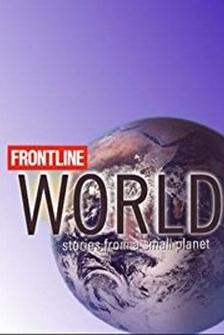Announcer: This program was made possible by the John S. and James L. Knight Foundation, The Andrew W. Mellon Foundation, and by contributions to your PBS station from viewers like you.
Thank you.
I knew that there was going to be backlash to this.
This is a ambitious and provocative project.
The reason the project has to exist is, we have wanted to treat slavery as a asterisks, and even a lot of historians are invested in the idea of American exceptionalism.
We treat the Revolutionary period kind of as divine event, and this project was seeking to unsettle that and to say, "Yes.
We were founded on ideals of freedom but the practice of slavery," and if you think about 1619 as an origin, that explains, really, some of our most vexing problems and tensions.
♪ Hi, everyone.
This is "Beyond the Canvas" from the "PBS NewsHour."
I'm Amna Nawaz.
In this episode, we are focused on Black, female creators whose work in all its forms is shaping how we think about the past, the present, and the future.
You'll hear from leading voices in film, journalism, and the culinary world, up first, my conversation with Pulitzer Prize-winning journalist Nikole Hannah-Jones.
Her 1619 Project at the "New York Times" recentered America's origin story around the arrival of the first enslaved Africans.
More recently, Hannah-Jones went on to develop it further into a new book inviting journalists and thought leaders to write more broadly about the legacy of slavery.
The artists and creators you're about to meet were first featured on the "PBS NewsHour," and tonight you'll meet them on a new canvas and maybe see them and their work through a different lens.
That's right here on "Beyond the Canvas."
So why an expansion?
What did you feel it was necessary to expand upon from the previous work in this new book?
There were still so many areas of American life that we wanted to explore and other writers and historians we wanted to include that we couldn't fit into the original project, and it also was an opportunity to really expand on the original essays to answer some of the critics to really show our work and the scholarship that undergirded the original project and to make the connection of slavery to modern America even stronger.
You tackle a lot, even in this expansion-- 19 essays, 36 poems and works of fiction.
Issues include capitalism, inheritance, citizenship, music, justice.
Contributors include Dorothy Roberts, Wesley Morris, Trymaine Lee, Ibram X. Kendi.
How did you even decide what to include, who to approach, who to include?
So it was kind of a mix.
There's a essay by Dorothy Roberts on how race was constructed.
I knew that Martha Jones, I wanted her to write on citizenship, and then there were certain writers where-- Like, Ibram X. Kendi, I think he's a brilliant scholar, and I didn't know what he would write, but I knew I wanted to include him in the book.
I think one of my favorite essays and one that will probably be the most surprising to readers is the one by Harvard historian Tiya Miles on settler colonialism, Indian removal, and how the 5 so-called "Civilized Tribes" also engaged in chattel slavery.
I knew we needed to have an essay that dealt with Indian removal, but we had to find the right one, so it was a mix.
There's also the inclusion of portraits, beautiful photographs, real people throughout American history.
Why did you choose to include those?
When we learn this history, so seldom do you see just regular Black people in the 1800s or the early 1900s, and every one of those photos are not of famous people, forces you to pause before you enter the essays and reflect that these were human beings with real feelings, with the same emotions, loves, hurts, wants as anyone else, which is the opposite of what slavery tried to do, which was strip that humanity from people.
This claim, this central idea to the book, that 1619 could be considered the country's origin, that's not the national narrative we're taught growing up here, and it was met with some very fierce backlash when you first published the 1619 Project, historians, politicians, state lawmakers legislating against it by name.
Did the strength of that backlash surprise you?
Yes.
It did?
Yes.
Of course.
I mean, I knew there would be pushback, but no one could predict that state legislatures would be seeking to ban the project, that the President of the United States, Donald Trump at the time, would be castigating the project.
I think that's really unexpected.
There was an update to the work published, we should know, right?
In March of 2020, there was a clarification made.
The original language suggested that protecting slavery was a--quote, unquote-- "primary motivation for all colonists."
You updated that to "some colonists."
Why was that an important clarification to make?
Well, one, let me say, we weren't suggesting all colonists.
That was called rhetoric, so, for instance, if we say, "Americans love pizza," no one assumes that we mean every single American loves pizza, and so when I said colonists, I wasn't arguing that every single colonists had slavery as a motivation, but when scholars pushed back on that, then we amended it because I think that's what a journalist should do.
I think that only strengthens the project.
More big picture, let me ask you about where we are right now because there's a James Baldwin line that's actually in the book you cited in the chapter called "Fear" that "[N]ot everything that is faced "can be changed, but nothing can be changed unless it is faced," so do you see now a greater willingness among Americans generally to face the history of racism in this country, the legacy of slavery, and to begin to do the work to change it?
I do.
I mean, I think the response to the 1619 Project speaks to that.
You wouldn't see this type of intensive backlash if millions of Americans didn't actually care about learning this history.
I believe that if we believe our country is truly great, then it can withstand the light of the truth, and it's only if you are afraid that somehow the truth will destroy our country that you try to repress it, so I think what we saw last year with the racial justice protests was Americans starting to make connections and say, "Wait a minute.
We have unresolved issues."
The author is Nikole Hannah-Jones.
The new book is "The 1619 Project: A New Origin Story."
Thank you so much for being here.
Thank you.
Among the many Black women working to make sure hidden parts of American history don't stay that way are Karis Jagger and Fabienne Toback, executive producers of the Netflix documentary series ""High on the Hog."
"PBS NewsHour" special correspondent Charlayne Hunter-Gault spoke with the duo and others on the team about adapting the original book and bringing the stories of our culinary past to a new generation of viewers.
Hunter-Gault: "High on the Hog" begins in Dantokpa Market, Benin, West Africa, tracing the history both of African American food and the slave trade from there to the United States, a journey that helped host Stephen Satterfield explore his roots.
Satterfield: I just feel like, you know, the experience of seeing my own likeness...
Isn't it?
reflected in the hair, I see our style in the garments and how we wear stuff... And in our swagger.
our swagger, our ingenuity, our resourcefulness.
Hunter-Gault: The show's title is based on the breakthrough book published over a decade ago by historian and writer Dr. Jessica B. Harris, whose work I've applauded in the past.
They brought rice, the yams, peas, beans, black-eyed peas, fava beans.
All of those things that now join us are things that came with us.
That's right.
Hunter-Gault, voice-over: Harris got Satterfield in the first episode.
I felt so nurtured and so honored to be a part of her work and legacy in this way.
Hunter-Gault: Executive producers and creative partners Karis Jagger and Fabienne Toback studied and marked up Harris' booked for months.
Hers is crazy.
Every Post-It, every note.
Yeah.
Look.
Mine is crazy, too.
Looked like some of my books.
How did you find her, and how much help was she in your initial creation of the series?
Well, a dear friend of mine sent me the cover of the book, and he said, "Read this.
It's gonna change your life."
I sat and read it in one sitting.
We really wanted to treat it with the utmost care and consideration.
It's about community and a way to come together, and I think that's something that we show in the show a lot.
Every episode focuses on a communal table and a communal meal, and, for me, that's what food is, you know.
It's about having my family come together, having my friends come together, breaking bread, learning things, and that's where I get my joy.
Hunter-Gault, voice-over: Like its source material, "High on the Hog" acts as an historical corrective, pushing back on the erasure of the contributions of African American chefs and cooks, like James Hemings a Paris-trained chef and for most of his life was Thomas Jefferson's slave.
Hemmings helped introduce mac and cheese to America, but this legacy was largely unknown, even to his own descendants.
So you must have grown up eating mac and cheese.
Oh, sure.
We all did, didn't we?
Yeah.
We all did, right, and so how did it feel once you realized that you were a descendant of the person or the family that helped popularize this dish in the U.S.?
Well, first of all, I didn't grow up with that knowledge.
I didn't learn that until recently, and now that I know that, I'm wondering where my royalties are.
[Laughter] The thing for us with the book was to constantly keep weaving the hard stuff with the joy.
That's the route that we were taking because I think without one, it becomes overwhelming, and you need the balance.
Black history at the moment is being challenged throughout the country.
Are you hopeful that the show will in some way add to the dialogue in a positive way?
Toback: Absolutely.
I mean, we wanted to illuminate these histories so that they have some sort of memory or recollection from where that mac and cheese-- how it came here.
Hunter-Gault: The show was produced and led by a mostly Black creative team, including Academy Award-winning director Roger Ross Williams.
Williams: What you have is something very unique for Black people in which our stories are put into our hands and our care without needed additional context, without filtration.
Hunter-Gault: For the "PBS NewsHour," I'm Charlayne Hunter-Gault.
An infamous night in America's history, 4 Black men, all giants and their fields, meet for the very first time, but what really happened when Malcolm X, Jim Brown, Sam Cooke, and Muhammad Ali, then known as Cassius Clay, met in Miami back in 1964?
"Newshour's" Jeffrey Brown spoke to Regina King, the Oscar-winning actress and the director behind the movie "One Night In Miami," about bringing to life a cultural moment that resonates deeply, even today.
Yes.
Cassius Marcellus Clay is the new heavyweight champion of the world, boys.
Yes.
He is.
Brown, voice-over: February 25, 1964, 22-year-old Cassius Clay, soon to be known as Muhammad Ali, has just defeated Sonny Liston to become heavyweight champion of the world.
Why am I so pretty?
Brown, voice-over: After the action in the ring, Clay and 3 famous friends get together in a motel room for the real action-- deeply personal debates over their work and responsibilities as Black men.
...and that is why, Brother Sam, this movement that we are in is called a struggle, because we are fighting for our lives.
♪ Ha!
♪ Brown, voice-over: For Regina King, "One Night in Miami" was irresistible, the words, issues, and emotions alive then and now.
It is a representation of men that I know and love and the type of conversations that they're having and that they don't get an opportunity to see themselves in cinema that often look and feel the way they feel in real life.
Brown, voice-over: The 1964 gathering actually took place, and what a group-- Ali, one of the greatest boxers of all time, played by Eli Goree; Jim Brown, legendary NFL Hall of Fame running back, played by Aldis Hodge; Sam Cooke--singer, songwriter, producer extraordinaire-- played by Leslie Odom Jr. of "Hamilton" fame; and Malcolm X, the charismatic Black nationalist leader and minister of the Nation of Islam, played by Kingsley Ben-Adir.
One photo exists of Malcolm and Ali that night.
It was used for a scene in the film.
♪ What actually happened that night, though, was imagined by writer Kemp Powers, first in his 2013 play "One Night in Miami," now as the film's screenwriter.
Kemp, voice-over: They were significant then.
They're significant now, and one can't help but wonder what a group like that might discuss if gathered together in a room.
I mean, who wouldn't want to be a fly on the wall?
Brown, voice-over: All were at personal or professional crossroads, having reached unimagined heights but facing doubts about the way forward.
Regina King herself is known for powerful performances, including an Oscar-winning role in "If Beale Street Could Talk"... We are drinking to new life.
Brown, voice-over: and for speaking out on giving women more positions of power in Hollywood.
Everything that I produce, that is 50% women.
King, voice-over: A lot of artists have a conversation like this, and even just a inner conversation.
Did this have a personal connection for you?
Absolutely, and, for me, reading this script the first time, it was just a great, again, confirmation that, "All right.
You are figuring it out, "how you're gonna use your platform, and there is not a specific way."
Brown, voice-over: For writer Kemp Powers, who's also co-written and co-directed the new Pixar film "Soul," this was also personal.
The debate that they're having, that's a debate me and my friends would have.
I'm just reverse-engineering it into the mouths of the men who inspire that way of thinking.
Cassius: We have to be there for each other.
Brown, voice-over: For the "PBS NewsHour," I'm Jeffrey Brown.
♪ In the summer of 2020, one woman's name echoed in the streets as protesters fought to remind the world that Black lives matter.
That name was Breonna Taylor, killed by police in her home.
Countless works of art were inspired by Taylor's death with the hope that her life would be remembered for years to come.
An exhibition in her hometown of Louisville, Kentucky, sought to bring together some of those images, raising important questions about race and policing.
Jeffrey Brown spoke with museum staff about the effort to make sure the name Breonna Taylor isn't forgotten.
Brown, voice-over: A large portrait of a young woman in a turquoise dress, hand on hip, eyes ahead, strong and confident, but this was painted posthumously, an image to force America to remember a life and say her name-- Breonna Taylor.
Amy Robach: Family and friends are remembering Breonna Taylor.
Brown, voice-over: The 26-year-old medical worker was shot and killed in March 2020 by Louisville, Kentucky, police officers in a late-night raid on her apartment.
Say her name!
Breonna Taylor!
Say is again!
Breonna Taylor.
Brown, voice-over: Since then, her name has been chanted during protests worldwide.
Her image has come to represent Black lives taken without accountability or justice.
We won't forget!
Brown: Now a portrait by artist Amy Sherald originally made for the cover of "Vanity Fair" magazine is the centerpiece of an exhibition at Louisville's Speed Art Museum, an unusual, in-the-moment response by a cultural institution to its city's grief.
Toya Northington oversaw the museum's community outreach.
Northington: We were coming right from protest.
Race relations weren't great in the city, right?
It's still very tense, still very divided.
It's one thing to say, "Ah, we have some memberships," right, but it's another to say, "Listen.
"We're gonna take on this subject matter "that means so much to so many people, "and we're gonna do this justice.
We need you to join us on that."
Brown: Most important of all, that meant including Breonna Taylor's mother Tamika Palmer from the beginning.
Allison Glenn of the Crystal Bridges Museum in Arkansas served as guest curator of this exhibition.
Brown: What was important for you to get from her?
It was important to get her trust more than anything.
This is her daughter and the story about her daughter within the context of an exhibition telling a story that is focused on a portrait that was painted of her daughter.
It was extremely important to gain her trust.
Brown, voice-over: Tamika Palmer provided a wall text about the night her world was shattered and a timeline of her daughter's life.
She also offered 3 words that became the exhibition's title-- Promise, Witness, Remembrance."
Curator Allison Glenn gathered works-- a 2018 sculpture titled "Unarmed" by Nick Cave, a brand-new print by Maria Magdalena Campos-Pons called "Butterfly Eyes (for Breonna Taylor)," a 1969 draped painting by the renowned, Louisville-born artist Sam Gilliam-- "Carrousel Form II."
The "Promise" section reflected the use and abuse of national ideals... Man: ♪ O say can you see... ♪ Brown, voice-over: in Bethany Collins' "The Star Spangled Banner: A Hymnal" and Nari Ward's "We the People" made from colored shoelaces.
"Witness" features recent images by Louisville photographers documenting the demonstrations in the city and Noel Anderson's blurred and erased women from the pages of "Ebony" magazine, part of the "Remembrance" section a video by Jon-Sesrie Goff about the 2016 mass shooting at Emanuel Church in Charleston titled "A Site of Reckoning: Battlefield."
Glenn: So much about curatorial work is about bringing people in, so when you walk into the space of the galleries, I'm telling you a story.
I have a narrative that I'm trying to articulate looking at, perhaps, the promise of a nation and also looking how artists help us understand the contemporary moment.
Brown, voice-over: The museum created local and national advisory panels to guide it.
It also extended evening hours and waived the usual $20 admission fee, unusual steps, but these are unusual times for museums, as well, as they face questions of their own inclusivity and responsibility to serve a broader, more diverse community.
I asked Toya Worthington if this exhibition might serve as a model for others.
Worthington, voice-over: It can only be a model if people commit to the work, and sometimes that's just one conversation at a time, really listening, hearing people's concerns, hearing people's dreams, and seeing, "Well, how can we get closest to that?"
Brown: And you're trying to connect to people that perhaps don't have much relationship to the museum, right?
That's the point.
Why do an exhibition that reaches so far and connects so many people if we weren't going to bring the parts of the community that could benefit the most?
And really, what's happened with this exhibition is that it's been this great, affirming space.
It's heavy.
The content is heavy, and it's reflective, and it's emotional, but at the same time, when people come in from the community, they see themselves, or they see a piece of their experience.
I wanted it to be for everybody.
Brown: For the "PBS NewsHour," I'm Jeffrey Brown.
Finally, we turn to Roxane Gay, powerhouse writer and thinker whose bestselling works include "Bad Feminist" and "Hunger."
In this, our last segment, Gay offers her brief but spectacular take on writing about trauma and finding ways of being heard.
A lot of times, people ask me about voice and how to find it as if they can go on some sort of search and find voice waiting for them at the end of it, but, in fact, we tend to already have our voices, and it's really a question of learning how to use our voices and knowing that we have every right to do so.
I started writing when I was 4 years old.
I would draw little villages on napkins, and then I would write stories about the people living in those Villages.
I think and write quite a lot about trauma.
Few of us know how to talk about it because we have very little language for trauma.
People seem to want us to have these triumphant stories, and there's not a lot of space for the in-between where you've suffered and you're healed but things are maybe also not OK.
When I wrote my memoir "Hunger," which was a memoir of my body, I was extremely worried about how it would be received because it required a level of vulnerability I found extremely uncomfortable to write about a fat body while living in it without some sort of triumphant weight-loss narrative, and I certainly didn't think anyone but other fat people would gravitate toward the book, but as I was touring it-- not only in this country, but all around the world-- I found that everybody lives in a body that is complicated and that they struggle with at one time or another.
I think a lot of people are looking for language to talk about that.
In general, to write about most anything personal, I tell myself that no one's gonna read my work.
I was terrified when I wrote "Hunger."
I just did it anyway.
I did it despite the fear, and to have my story connect with so many people in so many different kinds of bodies was really overwhelming, and it reminded me of what great writing can do.
Oftentimes when we think about trauma, we think about it in the context of the personal, but we deal with collective traumas all of the time.
We are currently in the second year of a collective-trauma pandemic, and most of us have no idea how to grapple with that level of loss, with the fact that nearly a million people have simply disappeared from our daily lives.
There are things that we really do need to sit with and spend more time with to fully make sense of, and so a lot of my current work is about how do we reckon with these collective traumas?
I'm often asked, particularly by young women, how they can be less angry in their writing, as if anger is a bad thing, and what I love to tell these women and what I also remind myself is that anger is oftentimes incredibly appropriate when you're writing about sexual violence, misogyny, all of the issues that feminists are trying to address in our work.
Anger can be incredibly productive, and I hope to encourage them to find ways to use anger for the greater good and to see it as an asset rather than a liability.
My name is Roxanne Gay, and this is my brief but spectacular take on ways of being heard.
Their work is powerful and beautiful and necessary, and the impact of all these Black, female creators is undeniable, reminding us not only who we've been, but who we can be.
We hope these stories have given some inspiration and some joy to you and your families and loved ones.
We also hope you'll join the conversation on our website.
That's pbs.org/canvas and find more "Canvas" art stories on the "PBS Newshour."
I'm Amna Nawaz.
For all of us at the "PBS NewsHour," thank you for joining me right here on "Beyond the Canvas."
Coming up next time on "Beyond the Canvas," conceptual artist Andy Yoder sees art in the most unexpected places.
He's joined by others whose art is engaging with and transforming the world around them.
Yoder, voice-over: It's that juxtaposition, that slamming together of things from high culture, low culture.
Man, voice-over: To climb a mountain like Everest, you need to have a lot of endurance.
Different man, voice-over: Activism informs art, and art affects activism.
They go hand in hand.
♪ ♪ ♪ ♪ Announcer: This program was made possible by the John S. and James L. Knight Foundation, The Andrew W. Mellon Foundation, and by contributions to your PBS station from viewers like you.
Thank you.


